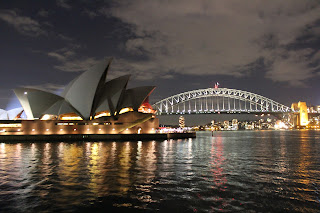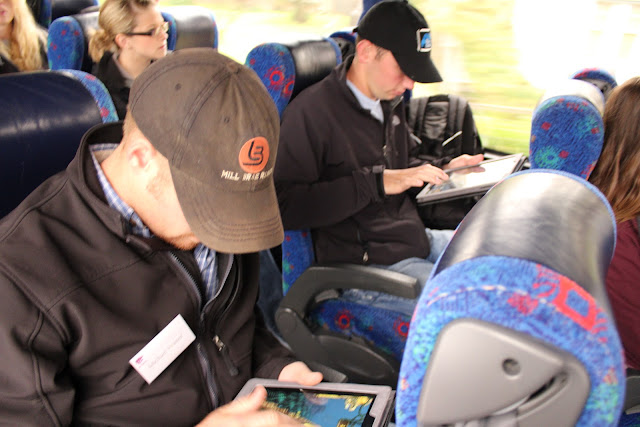 |
| CSU is located on outside Wagga Wagga and many students live on campus. |
Australia may not be home to any cats in the wild,
but there certainly is a fair share of Wildcats here.
During our past day or so in Wagga Wagga we had
the opportunity to meet two faculty members at Charles Strut University (CSU)
who have direct ties to Kansas State University.
On Monday night Dr. Peter J. Chenoweth joined us
for dinner at the Victoria Hotel, a restaurant and pub in Wagga Wagga. Dr.
Chenoweth is a former K-State faculty member and still maintains contact with
members of the reproductive physiology staff back in the United States.
After most of the group grabbed some steaks, we
finished enjoying the night by joining some CSU animal science students at a
local brewery, The Thirsty Crow.
It was a great time getting to know the CSU
students and compare our educational systems, while also learning about one
another's backgrounds.
The next morning we toured CSU with Dr. Chenoweth
serving as our guide. He took us around campus on a bus ride and then we made
our way to the College of Agriculture's farms. We stopped at various units on
the farm including the beef and sheep facilities.
 |
| This dog certainly put on a performance for the K-Staters. |
At the sheep unit the group got to witness our
first display of a cattle dog working in Australia. The Kelpie we watched was
just two years old, but she sure knew how to muster a mob of sheep.
Kelpies are a type of working dog that was bred in
Australia specifically to gather sheep.
The beef unit allowed the Wildcats to see some
excellent handling facilities that Dr. Chenoweth had designed utilizing Temple
Grandin style methods.
When we arrived at the unit a group of vet
students was mustering a mob of cows and calves to the working barn. All of the
cows received a cesarean to aid in the learning of the vet students at CSU and
they were being brought in for a routine checkup.
Besides looking at the units on campus we also had
the chance to tour their state of the art College of Veterinary Medicine
buildings. Some of the highlights of the vet med area was seeing reproductive
stations used for artificial insemination of horses and new technology for
animal x-rays.
 |
| Former K-Staters talking to us about CSU. |
We me another K-Stater Down Under, Dr. Tonya
Collop, the resident reproductive specialist at CSU. She received her doctorate
of veterinary medicine at Kansas State, so it was good for the group to see an
alumni in the area.
It's great to see fellow Wildcats doing so well
across the world, and maybe some of our group members will want to come back
down to Australia someday.
Until we meet again, happy trails!

















































